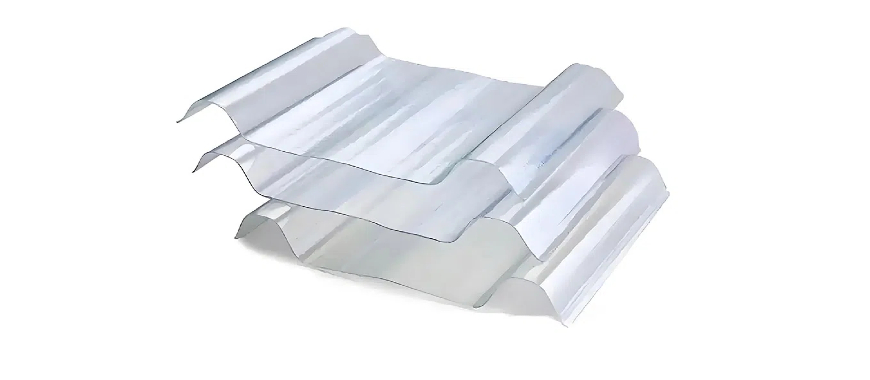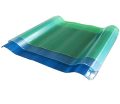
FRP materials are widely used due to their durability, strength, and lightweight properties. They are essential in construction, automotive, and marine industries. An FRP data sheet provides critical information about the material’s physical and mechanical properties, ensuring informed decisions during project planning. This document includes specifications like density, thickness, and performance metrics, making it indispensable for engineers and architects.Accessing an FRP data sheet is straightforward, with PDF and Excel options available for easy reference. These formats allow for detailed review and integration into project workflows. Additionally, an FRP data sheet PDF free download option can often be found online, making it more accessible for professionals seeking reliable data.
Key Sections in an FRP Data Sheet
A FRP data sheet serves as a comprehensive guide for understanding the features, performance, and technical characteristics of fiber-reinforced plastic (FRP) materials. It is essential for engineers, architects, and material scientists who need detailed information for various applications. Below are the key sections commonly included in an FRP data sheet, each providing specific insights.
Technical Data and Standards
This section of an FRP data sheet outlines the standards and certifications that ensure the material meets industry expectations. These standards provide credibility and allow professionals to compare materials effectively.
Referenced Standards Commonly Found in FRP Data Sheets
- ASTM Standards: Widely recognized benchmarks for testing and material properties, such as ASTM D3039 for tensile properties and ASTM D790 for flexural properties.
- ISO Standards: International certifications like ISO 178 (flexural testing) and ISO 527 (tensile testing).
- Fire Safety Standards: Compliance with safety standards like ASTM E84 for flame spread and smoke ratings.
Overview of Compliance with ASTM and ISO Tests
- Materials undergo rigorous testing to ensure compliance, including thermal, mechanical, and chemical resistance assessments.
- Certification with both ASTM and ISO indicates the material’s global usability.
- Testing results are clearly listed in the FRP data sheet, ensuring transparency and aiding decision-making.
Physical and Mechanical Properties
This section of the FRP data sheet provides specific details about the physical characteristics and mechanical performance of FRP materials, which are critical for design and application.
Density of FRP in kg/m³ and Material Weight per Area
- FRP typically ranges from 1500 to 2000 kg/m³, offering a lightweight solution compared to metal alternatives.
- Weight per area is detailed, enabling precise calculations for structural designs.
Details on Thickness, Strength, and Other FRP Material Properties
- Thickness options vary widely, from 1 mm to over 50 mm, depending on application needs.
- Tensile strength values range from 100 MPa to 500 MPa, offering versatility for lightweight yet durable applications.
- Flexural properties provide insights into the bending capacity of the material, critical for load-bearing structures.
Variations: Smooth and Textured Surfaces, Custom Colors
- Smooth surfaces: Ideal for hygienic applications like food processing.
- Textured surfaces: Provide enhanced slip resistance for walkways or industrial settings.
- Customization options, including various colors, ensure aesthetic and functional integration into projects.
Performance Test Results
Performance tests are vital in validating the capabilities of FRP materials. This section in an FRP data sheet offers empirical data to assess suitability under different conditions.
Fire Resistance: Flame Spread and Smoke Development Ratings
- FRP materials often include Class A or Class B ratings under ASTM E84 for flame spread and smoke generation.
- High-performance FRP ensures safety in applications like public buildings and transportation. The addition of fiberglass mesh sheets can provide extra reinforcement, helping to improve durability without compromising fire safety standards.
Strength Parameters: Tensile, Flexural, and Compressive Strengths
- Tensile Strength: Measures the force required to break the material under tension, typically ranging from 200 MPa to 500 MPa.
- Flexural Strength: Indicates the material’s ability to resist deformation under load, essential for structural stability.
- Compressive Strength: Ensures the material performs well under compressive loads, with values often exceeding 150 MPa.
Thermal Properties: Heat Deflection Temperature and Expansion Coefficients
- Heat deflection temperature (HDT) ranges from 60°C to 200°C, depending on the resin type.
- Low coefficients of thermal expansion (CTE) ensure minimal dimensional changes under temperature fluctuations, critical for outdoor applications.
An FRP data sheet provides critical information to evaluate materials for specific uses. By exploring technical data, physical properties, and performance results, users gain confidence in choosing FRP for various industrial, commercial, or architectural projects. For manufacturers, ensuring precise specifications is essential, especially when using an FRP grating machine to produce high-quality grating solutions. Understanding the material properties outlined in the data sheet helps optimize production settings, ensuring durability and performance in demanding environments.
Enhance Spaces with GRP Cladding Sheets Versatile Options
FRP Data Sheet:Manufacturing Tolerances for FRP Materials
At GangLong Fiberglass, we prioritize precision and quality in every fiber-reinforced plastic (FRP) product we manufacture. Our FRP data sheet clearly defines the manufacturing tolerances that ensure reliability and consistent performance across various applications. Here’s an overview of the key tolerance aspects we adhere to.
Dimensional Accuracy and Allowable Variations
- We maintain strict dimensional accuracy to ensure our products fit perfectly into their intended applications.
- Allowable dimensional variations are typically kept within ±0.5 mm to meet industry requirements and client expectations.
- Every FRP data sheet outlines these tolerances, enabling designers and engineers to plan with confidence.
Thickness Tolerances for Consistent Quality
- Thickness tolerances play a crucial role in product consistency.
- At GangLong Fiberglass, we adhere to a tolerance range of ±10% of nominal thickness, ensuring uniform performance.
- These tolerances are clearly documented in our FRP data sheet, providing transparency and reliability.
Out-of-Plane Bowing and Structural Integrity Specifications
- Out-of-plane bowing is minimized to maintain structural integrity and visual appeal.
- Bowing is limited to 3 mm per meter of length, ensuring straight and stable panels.
- Such specifications are detailed in our FRP data sheet, ensuring clarity for all stakeholders.
Our focus on manufacturing tolerances underscores our commitment to delivering FRP materials that perform reliably under all conditions.
FRP Data Sheet:Sustainability and GangLong Fiberglass
Sustainability is at the core of GangLong Fiberglass’s mission. Our FRP materials are engineered to meet modern environmental standards while maintaining exceptional performance. We believe every FRP data sheet should reflect our commitment to reducing environmental impact and promoting energy efficiency.
FRP Materials’ Contribution to Green Building Standards
- FRP materials align with LEED and other green building certifications, thanks to their durability and efficiency.
- Lightweight FRP panels reduce the overall structural load, minimizing the need for resource-heavy reinforcements. This advantage makes FRP deck panels an excellent choice for projects requiring both strength and sustainability, ensuring long-term performance with minimal environmental impact.
- Our FRP data sheet includes environmental impact data, helping clients achieve their sustainability goals.
Energy Efficiency and Low Environmental Impact
- FRP materials are highly energy-efficient, requiring less energy for production compared to traditional materials like steel.
- They offer long lifespans, reducing the frequency of replacements and associated environmental costs.
- Recyclable components in our products, outlined in the FRP data sheet, further lower the environmental footprint.
GangLong Fiberglass is proud to provide FRP solutions that not only perform exceptionally but also contribute to a greener future. Our commitment to innovation extends to products like FRP pipe insulation, which offers enhanced energy efficiency and protection in various applications. By ensuring our products meet both industry needs and sustainability standards, we continue to lead the way in delivering reliable, eco-friendly solutions.
Why Choose an FRP Transparent Sheet for Skylights?
FRP Data Sheet:Handling and Storage Guidelines
Proper handling and storage of FRP materials are crucial for maintaining their quality and performance. The FRP data sheet serves as an essential resource for understanding these best practices and ensuring the longevity of the materials.
Best Practices for Delivery and On-Site Handling
- Inspect materials upon delivery: Check for visible damages like cracks or scratches before accepting the shipment.
- Lift carefully: Use equipment such as forklifts or cranes with padded grips to prevent damage.
- Avoid dragging: Dragging FRP sheets may cause surface scratches, reducing their effectiveness in specific applications.
- Handle individually: When possible, move each sheet separately to avoid stress or bending.
Protection Against Environmental and Physical Damage
- Protect from sunlight: Prolonged UV exposure can degrade certain types of FRP materials, as noted in the FRP data sheet. Use tarps or UV-protective covers during storage.
- Prevent moisture accumulation: Store materials in a dry location to avoid warping or weakening due to water ingress.
- Avoid direct ground contact: Use pallets or supports to keep sheets off the ground, preventing exposure to debris or dampness.
- Shield from physical impacts: Store FRP sheets in a stable stack to prevent them from tipping over or being struck by heavy objects.
Packaging Recommendations for Safe Transportation
- Secure packaging: Materials should be wrapped in plastic or padded covers to prevent abrasions during transit.
- Label packages clearly: Include instructions such as “Handle with care” or “Keep dry” to alert handlers.
- Use reinforced pallets: Ensure FRP sheets are stacked on sturdy pallets with adequate support to minimize shifting.
- Consult the FRP data sheet: Packaging specifications provided in the data sheet help optimize transportation arrangements.
Proper handling and storage minimize the risk of damage, ensuring FRP materials retain their quality from delivery to installation.
FRP Glass Board Sheets: Custom Sizes and Colors
Accessing and Using FRP Data Sheets
An FRP data sheet is a vital tool for professionals seeking detailed information about material specifications, performance metrics, and application guidelines. Knowing how to access and effectively use these documents simplifies planning and ensures accuracy in design.
How to Find FRP Data Sheet PDFs for Free Download
- Manufacturer websites: Many suppliers provide free downloadable PDFs directly on their websites for ease of access. These data sheets often include fiberglass sheet specifications, offering detailed insights into material properties and performance for reference.
- Material libraries: Online databases often host a collection of FRP data sheet PDFs categorized by type and application.
- Request from suppliers: Directly contacting suppliers can yield the latest data sheets specific to your project.
Using FRP Data Sheets in Excel for Calculations and Planning
- Export data: Copy specifications like density, thickness, and strength parameters from the FRP data sheet into Excel for analysis.
- Calculate load capacities: Use tensile and compressive strength values to design structures that meet load requirements. For instance, cable tray load calculation can be conducted by analyzing the strength data to determine how the FRP material performs under various loads, ensuring the system’s stability.
- Compare materials: Create a comparison chart to evaluate different FRP types based on key specifications.
Ensuring Compatibility with FRP Spec Sections in Design Documents
- Cross-reference standards: Verify compliance with design codes mentioned in the FRP data sheet, such as ASTM and ISO standards.
- Coordinate with architects: Ensure the material specifications align with project drawings and other structural components.
- Avoid mismatches: Review dimensional tolerances and material properties to confirm they meet project needs.
By effectively accessing and utilizing FRP data sheet information, professionals can streamline project planning and ensure successful implementation.

As the editor of GangLong Fiberglass, I have years of experience and in-depth research, focusing on cable tray products, fiberglass solutions, and grille systems. I incorporate years of industry insights and practical experience into every content, committed to promoting the progress of the industry. At GangLong Fiberglass, my commitment is reflected in every product, from innovative cable trays to durable fiberglass solutions and sturdy grille systems. As an authoritative voice in the industry, my goal is to provide valuable information to professionals and businesses and promote forward-looking solutions.

